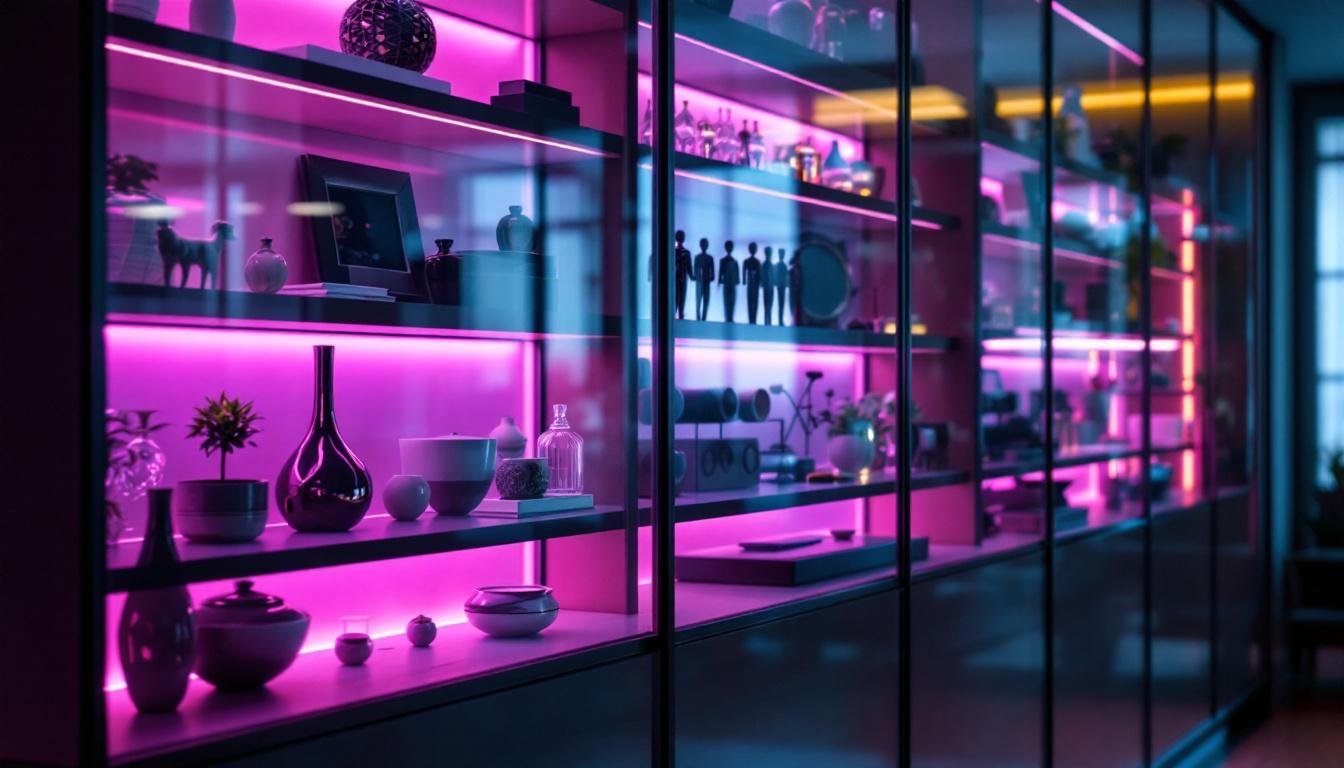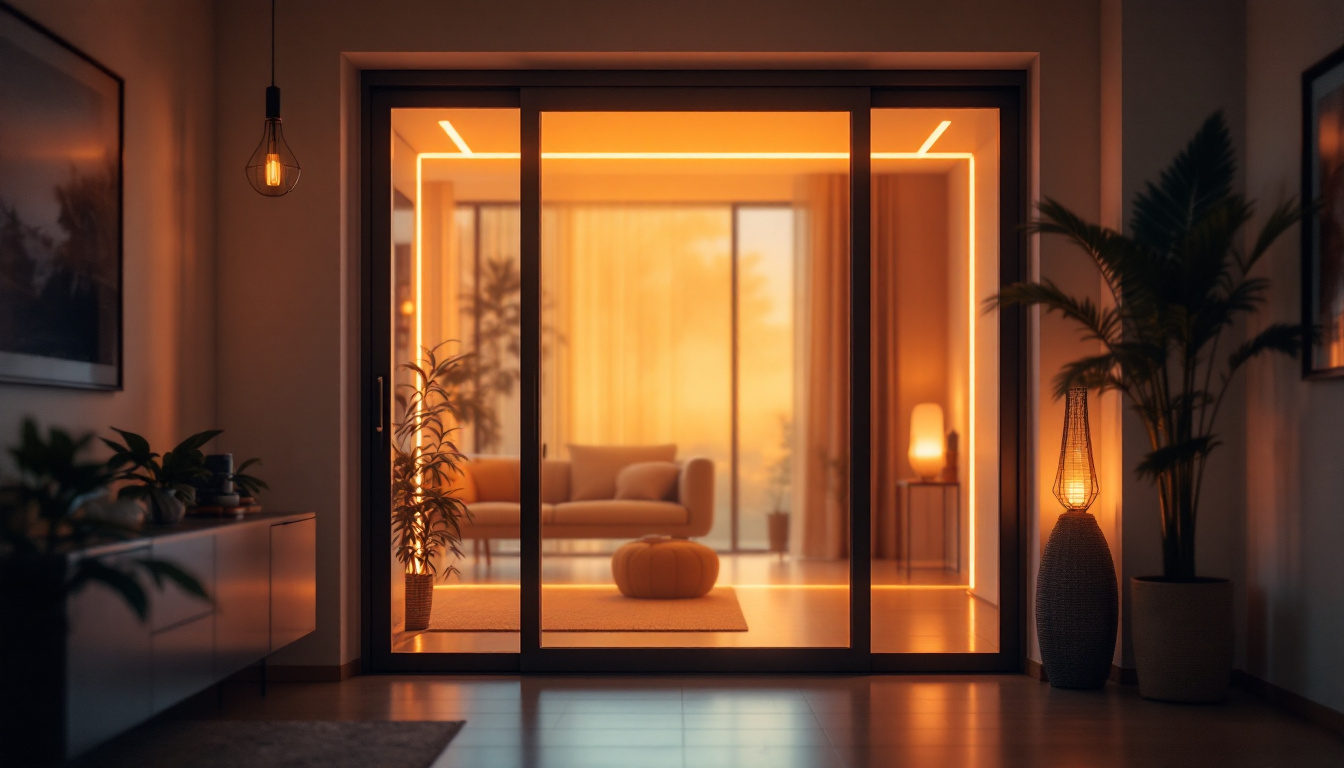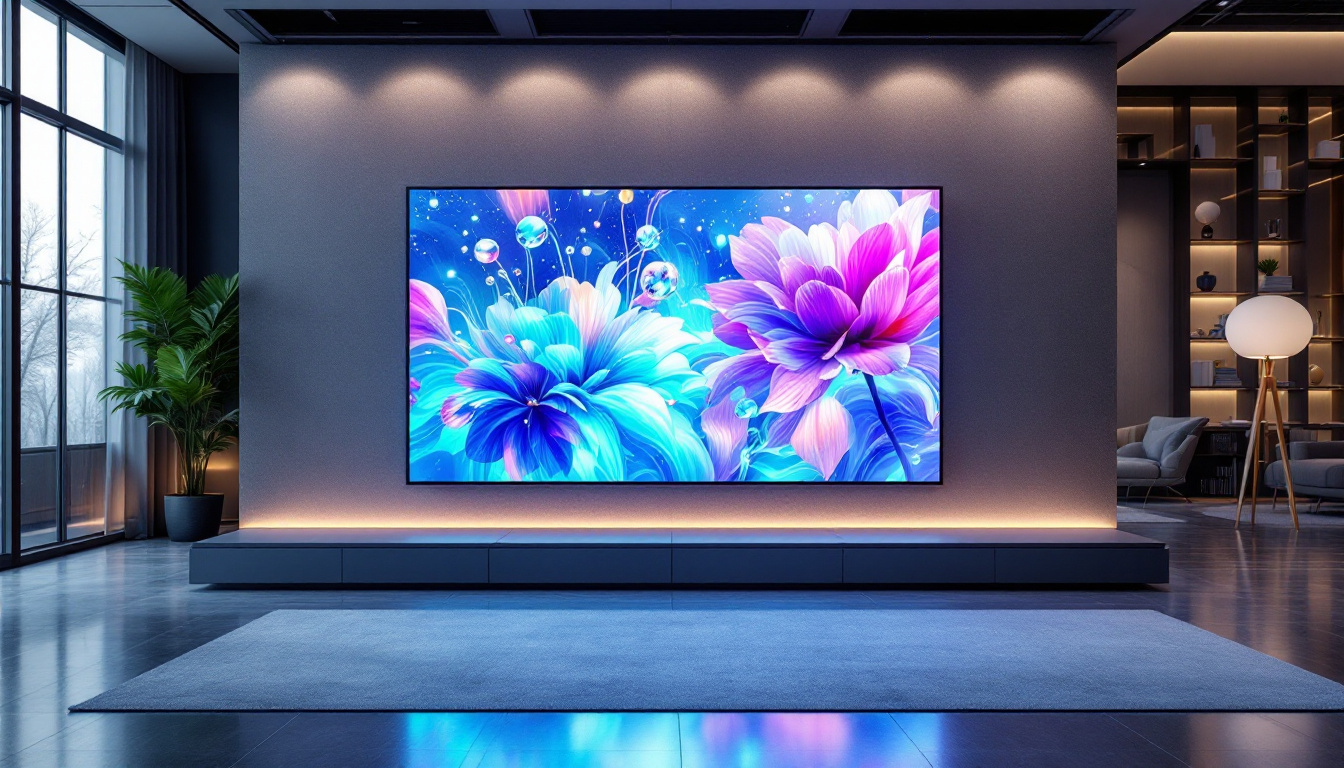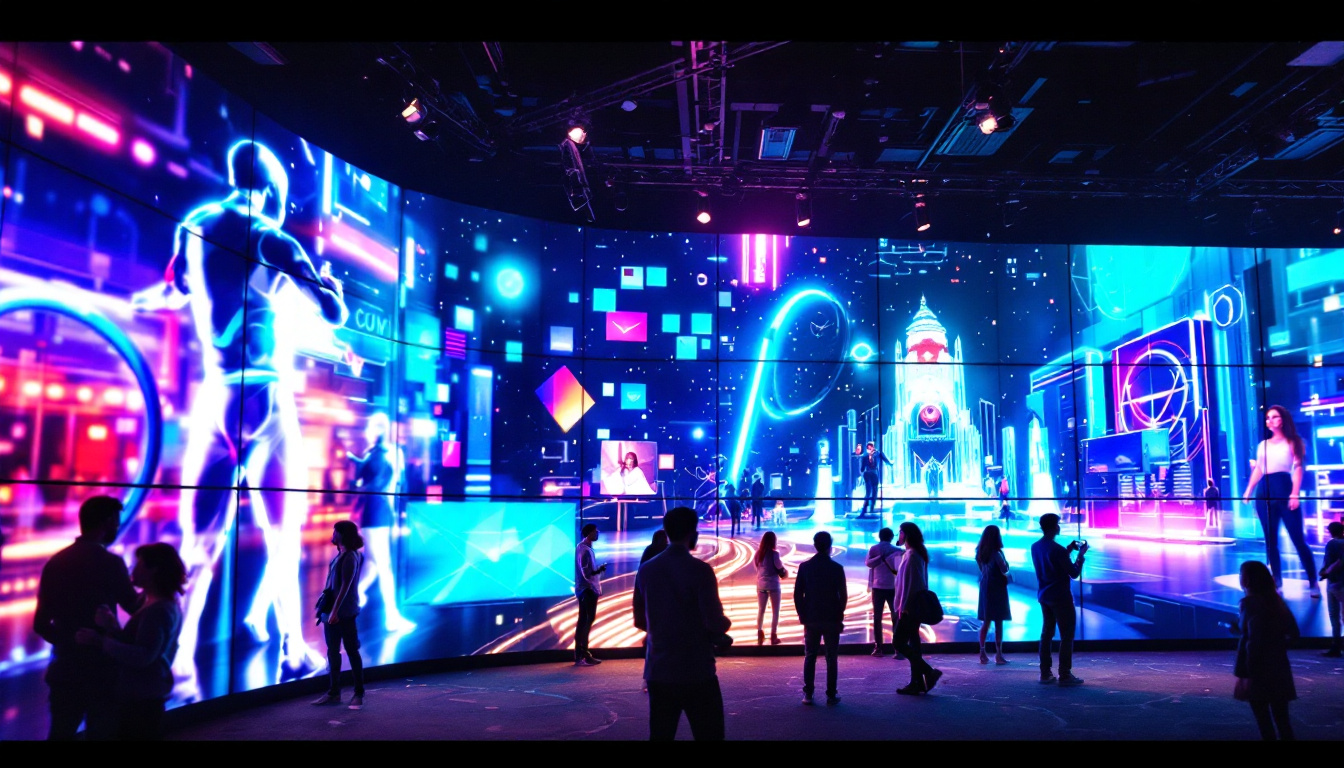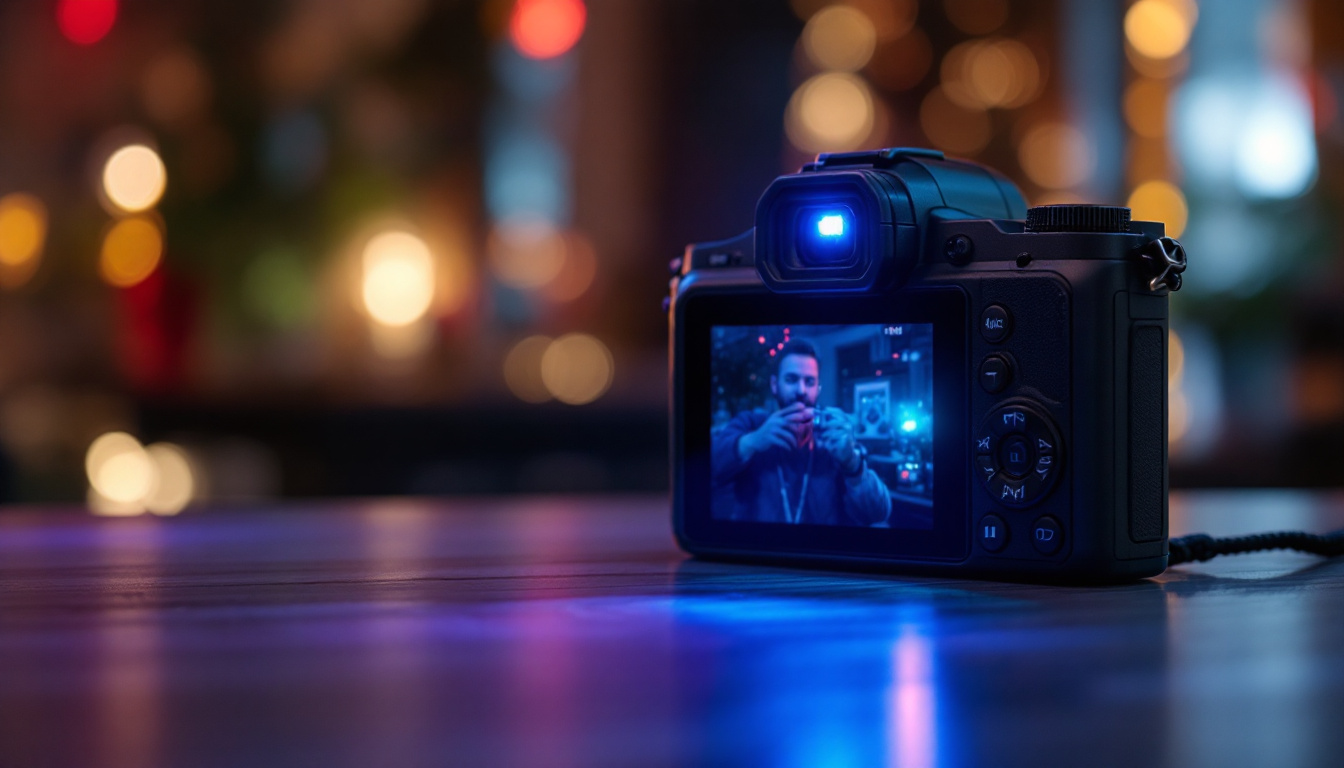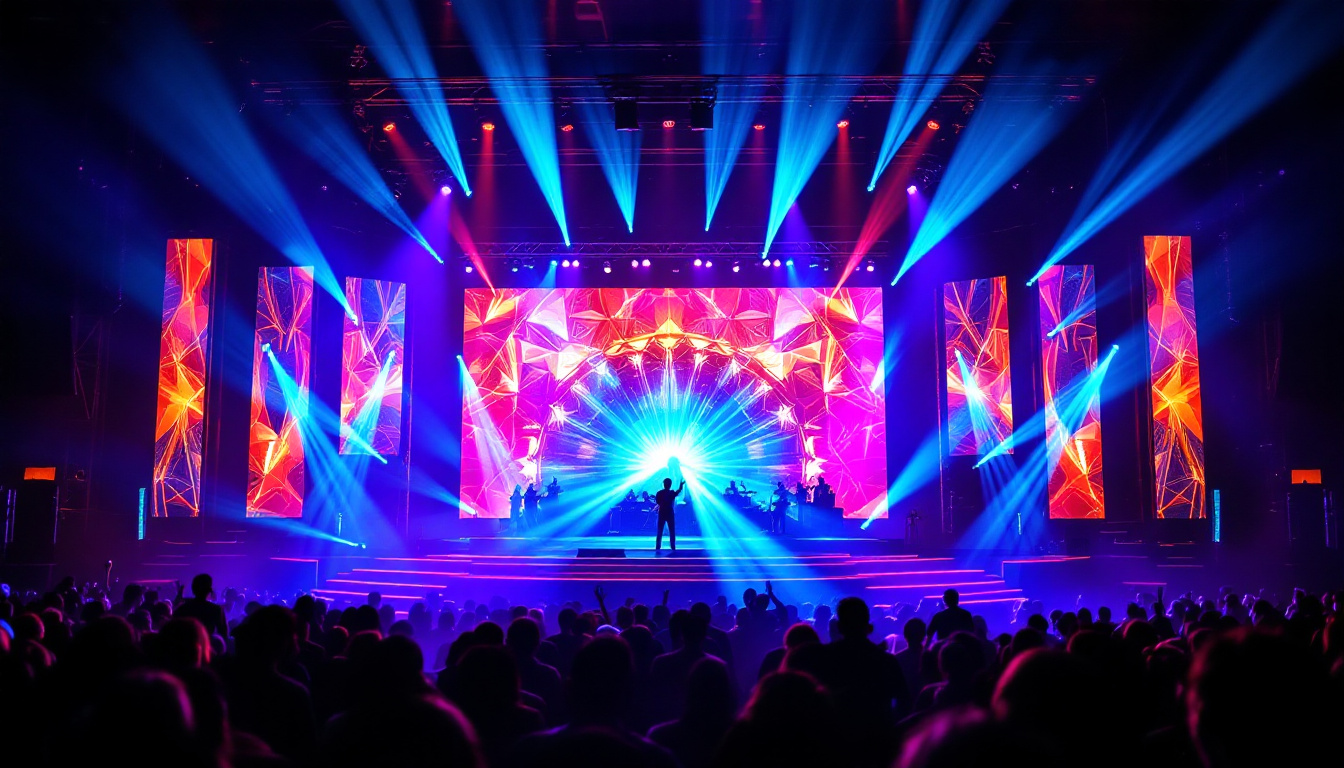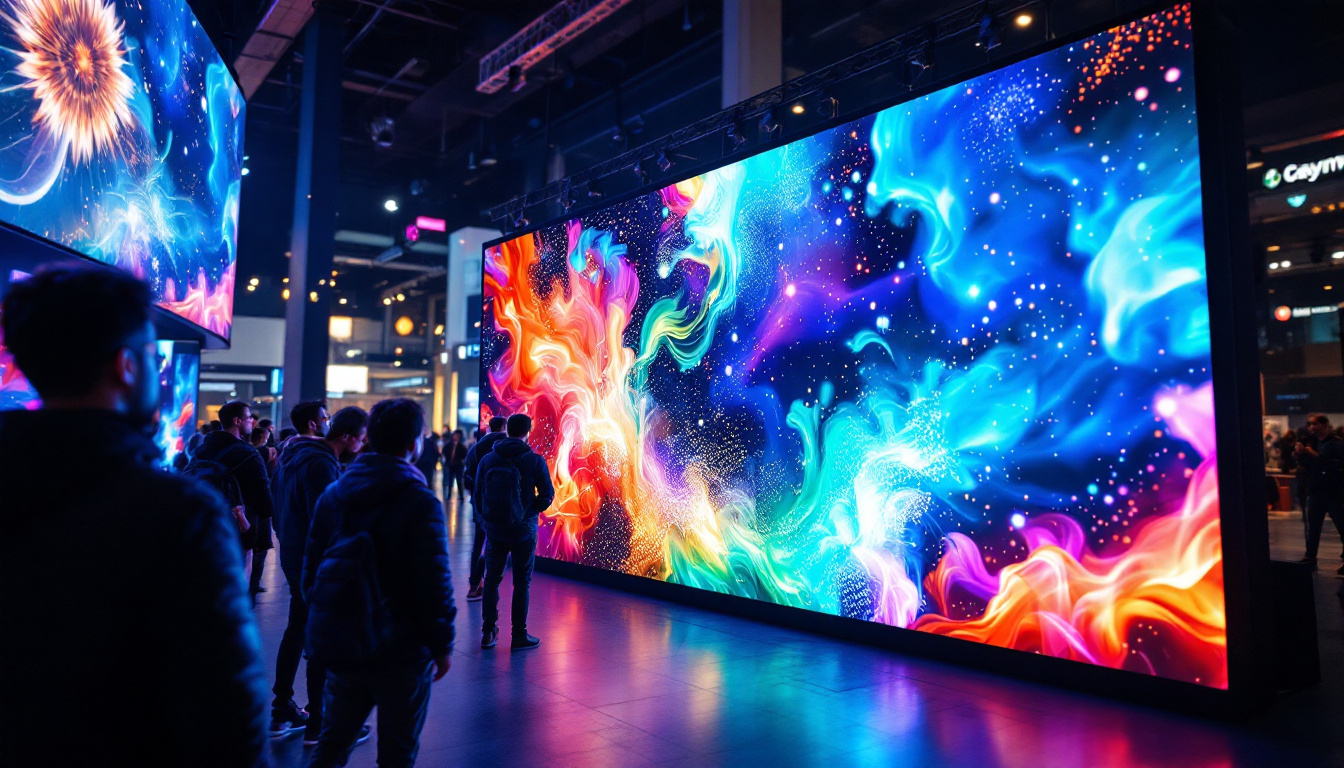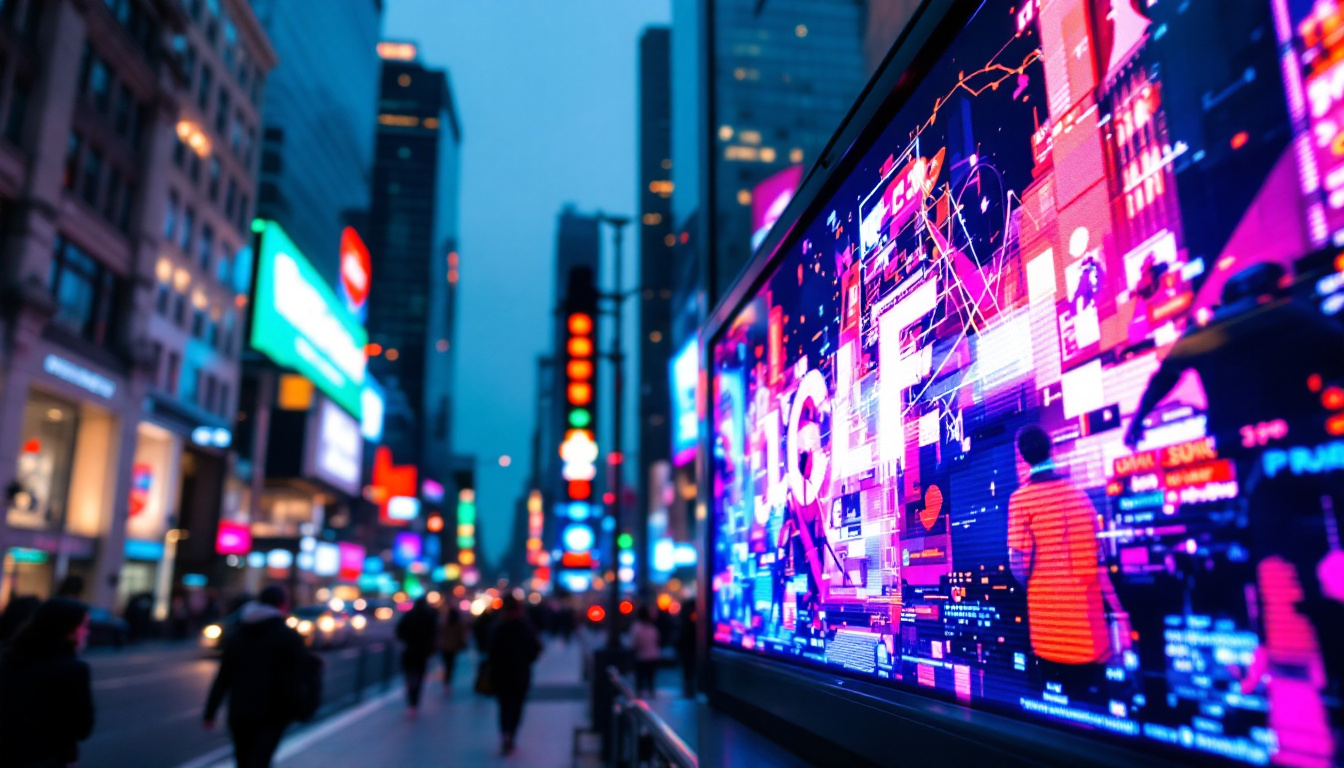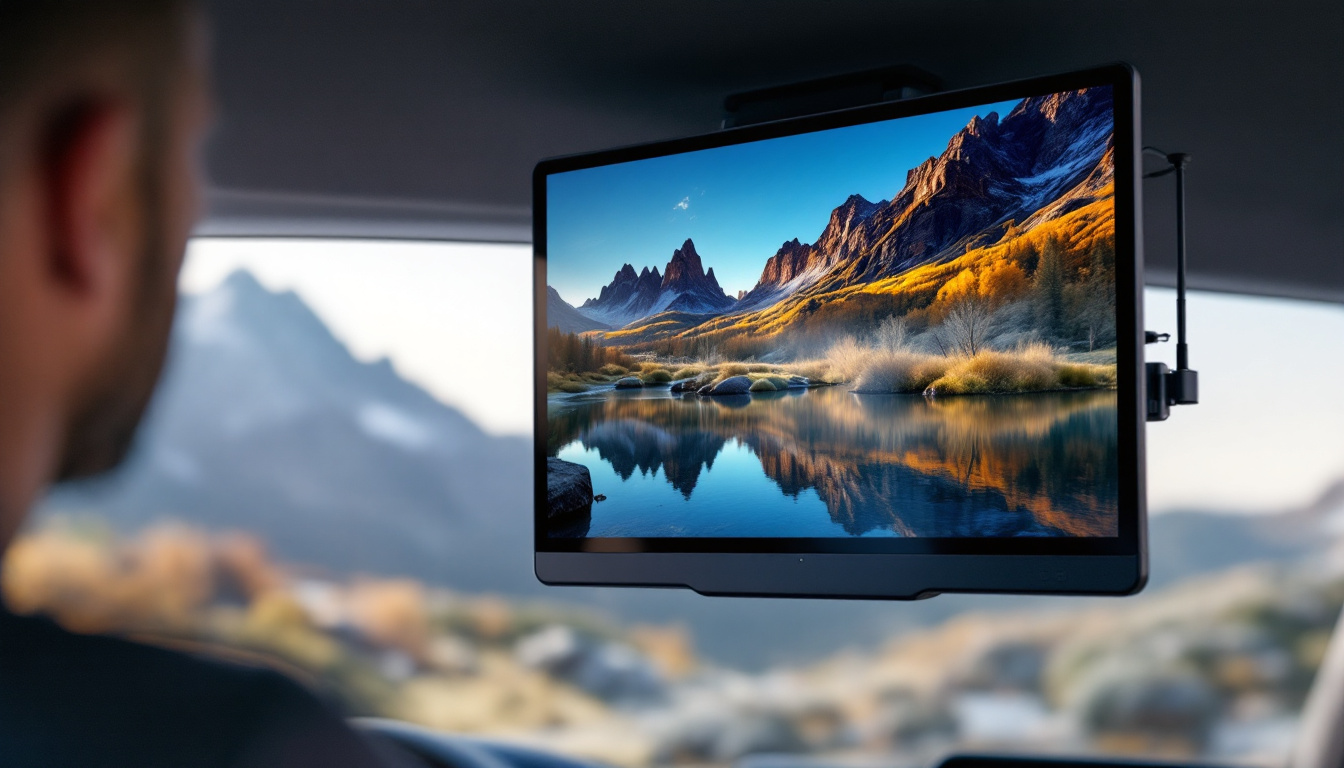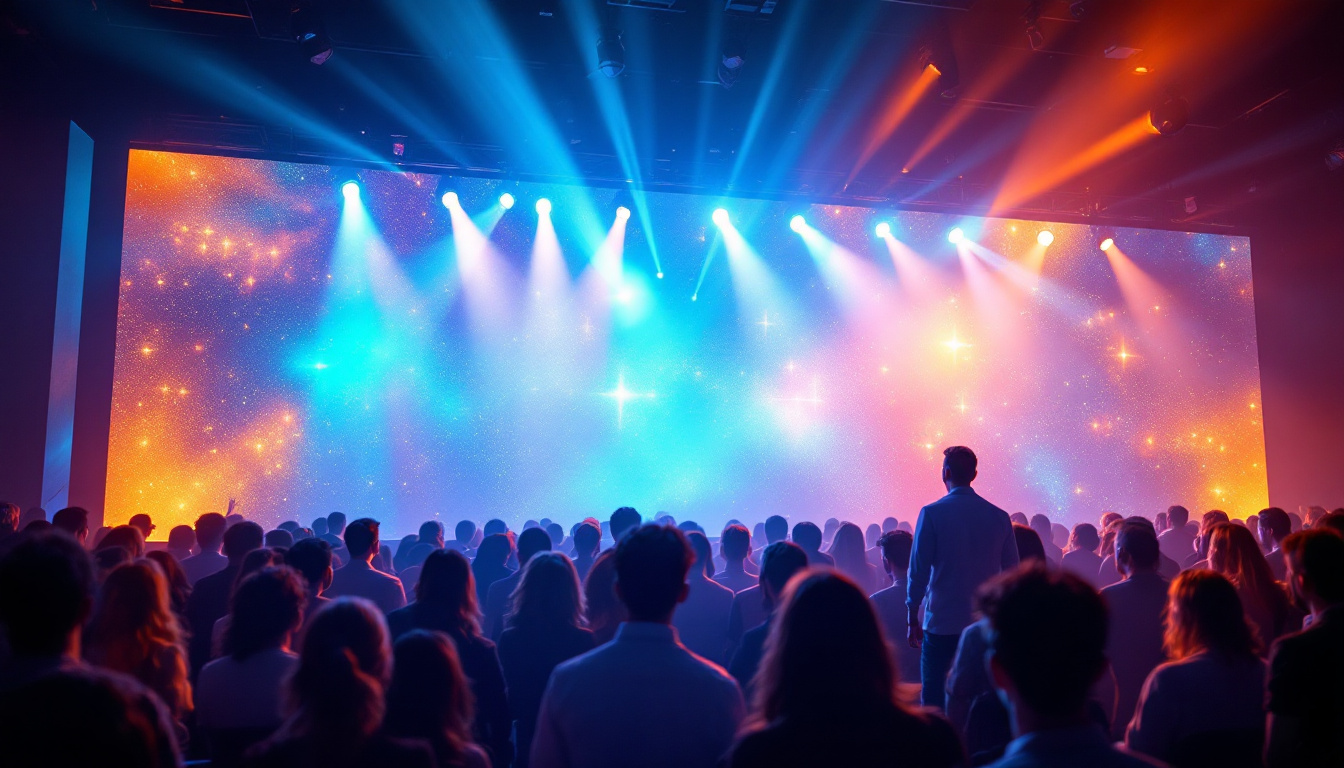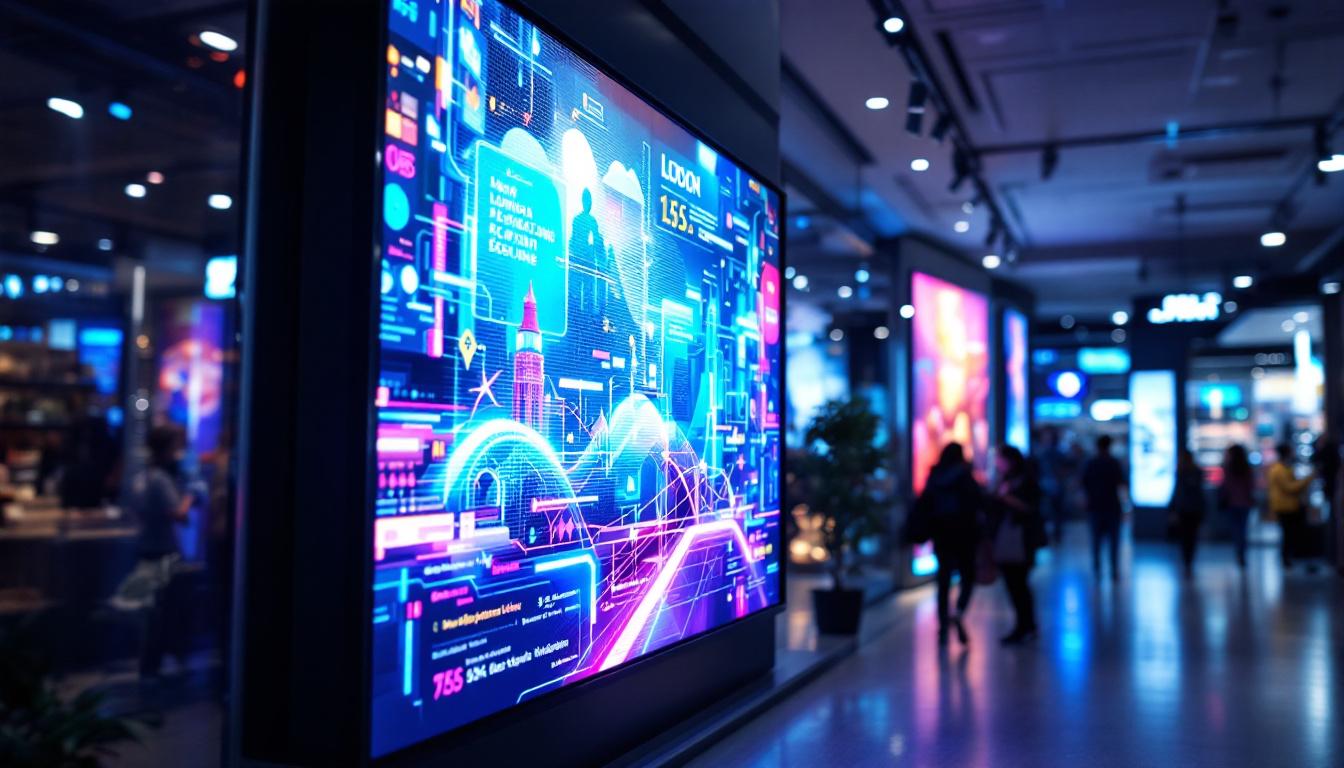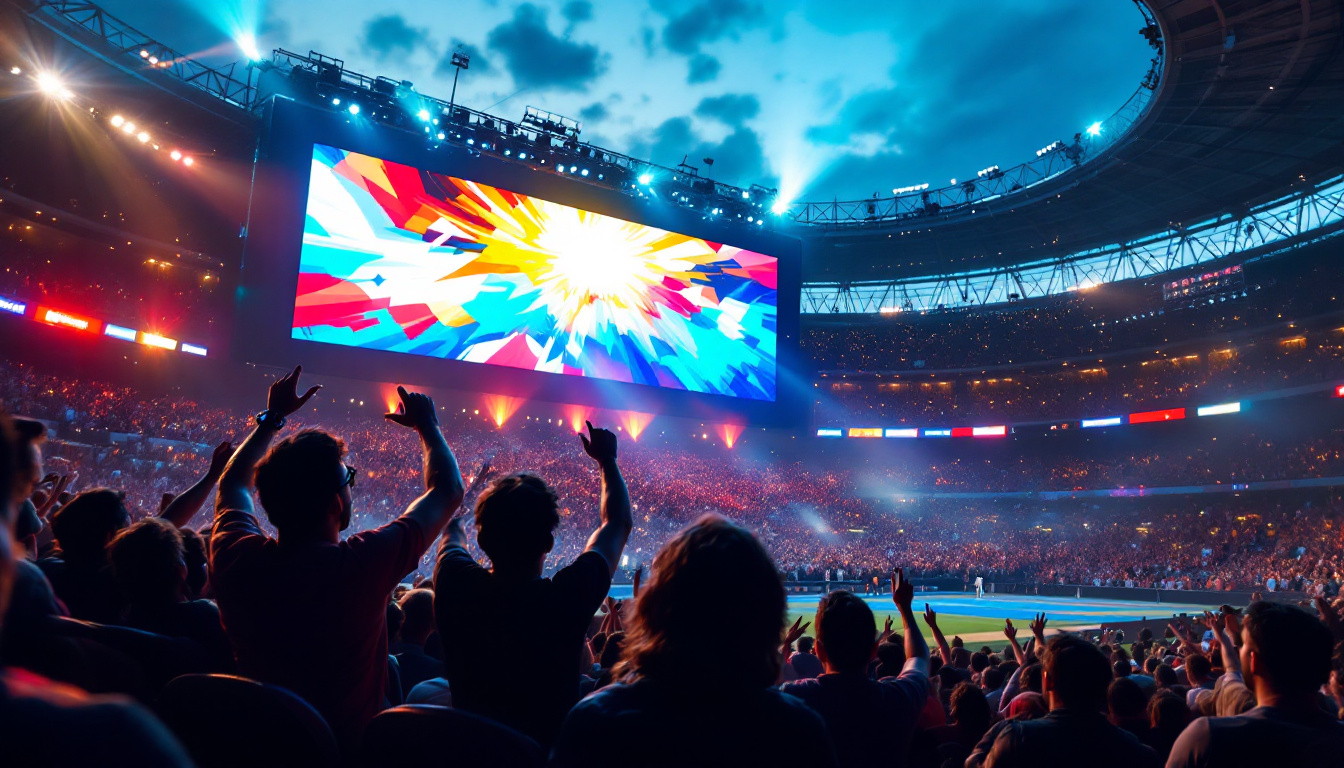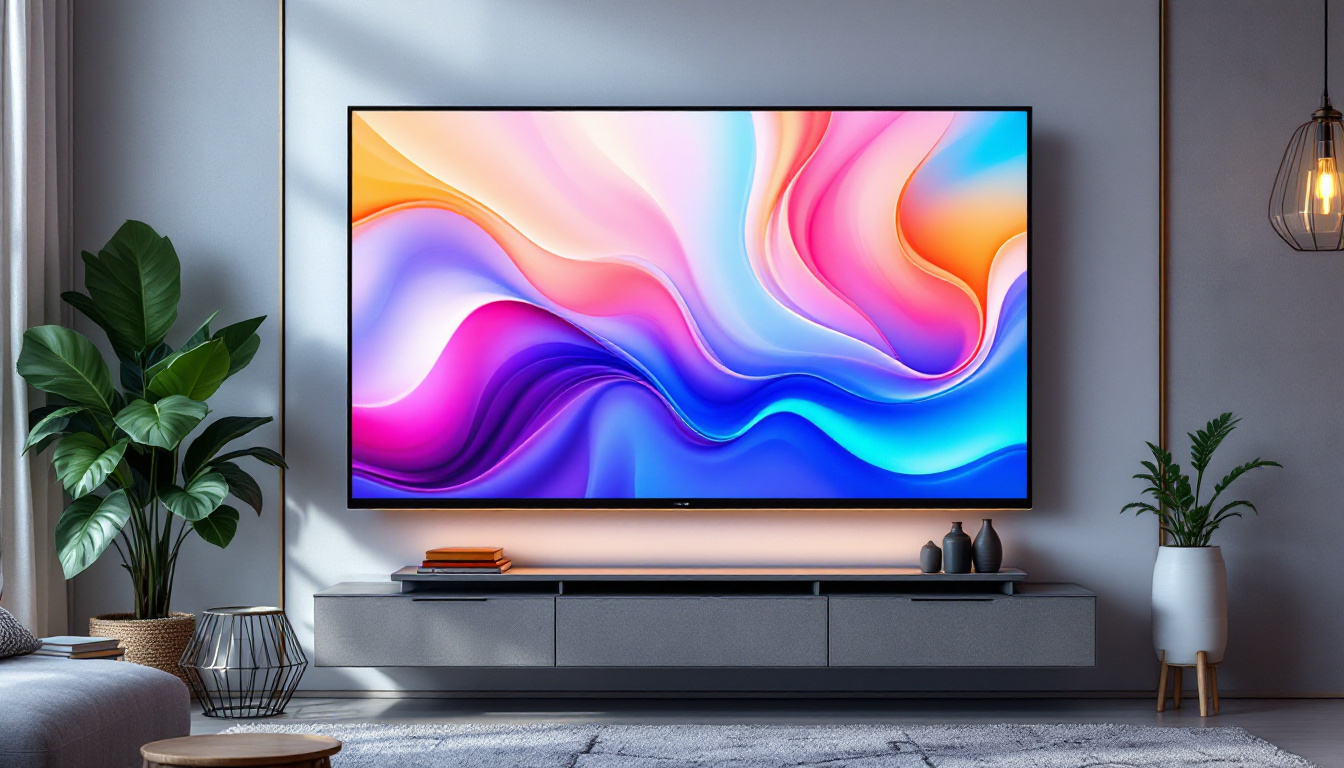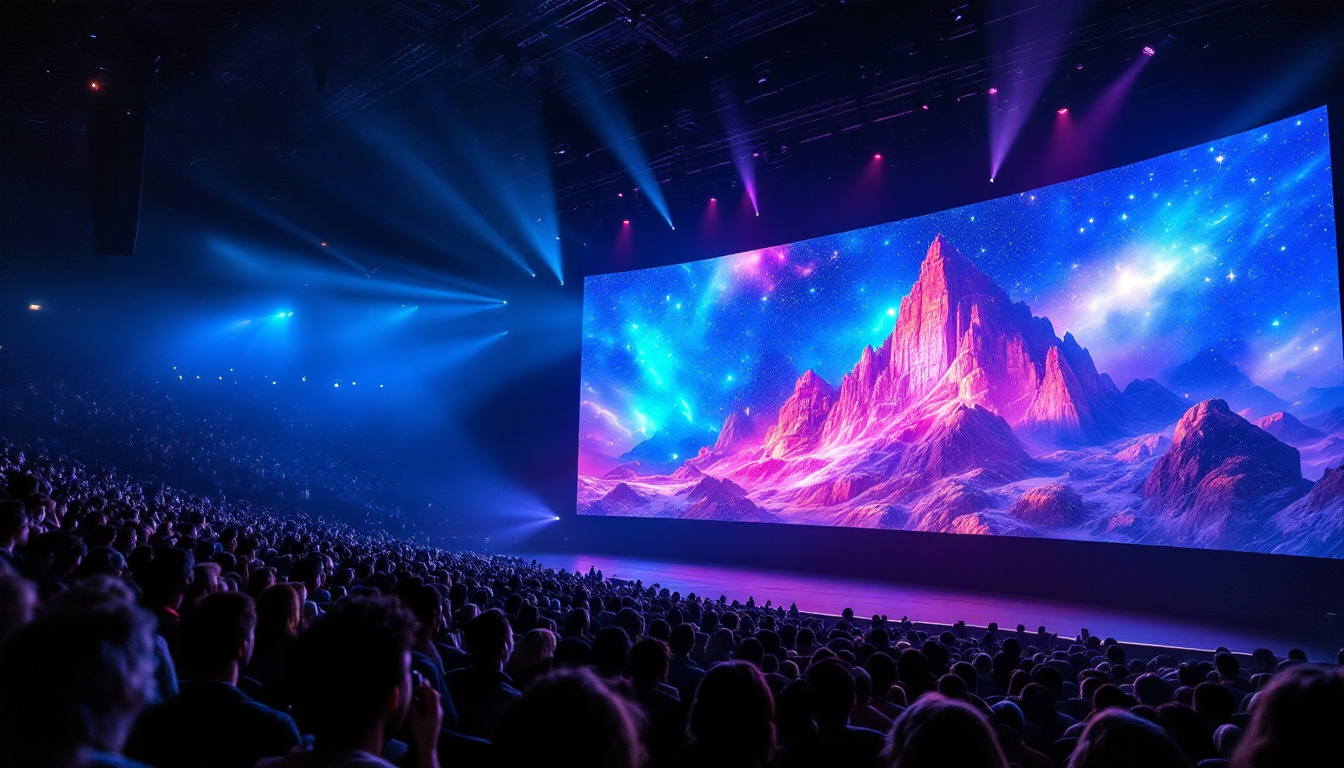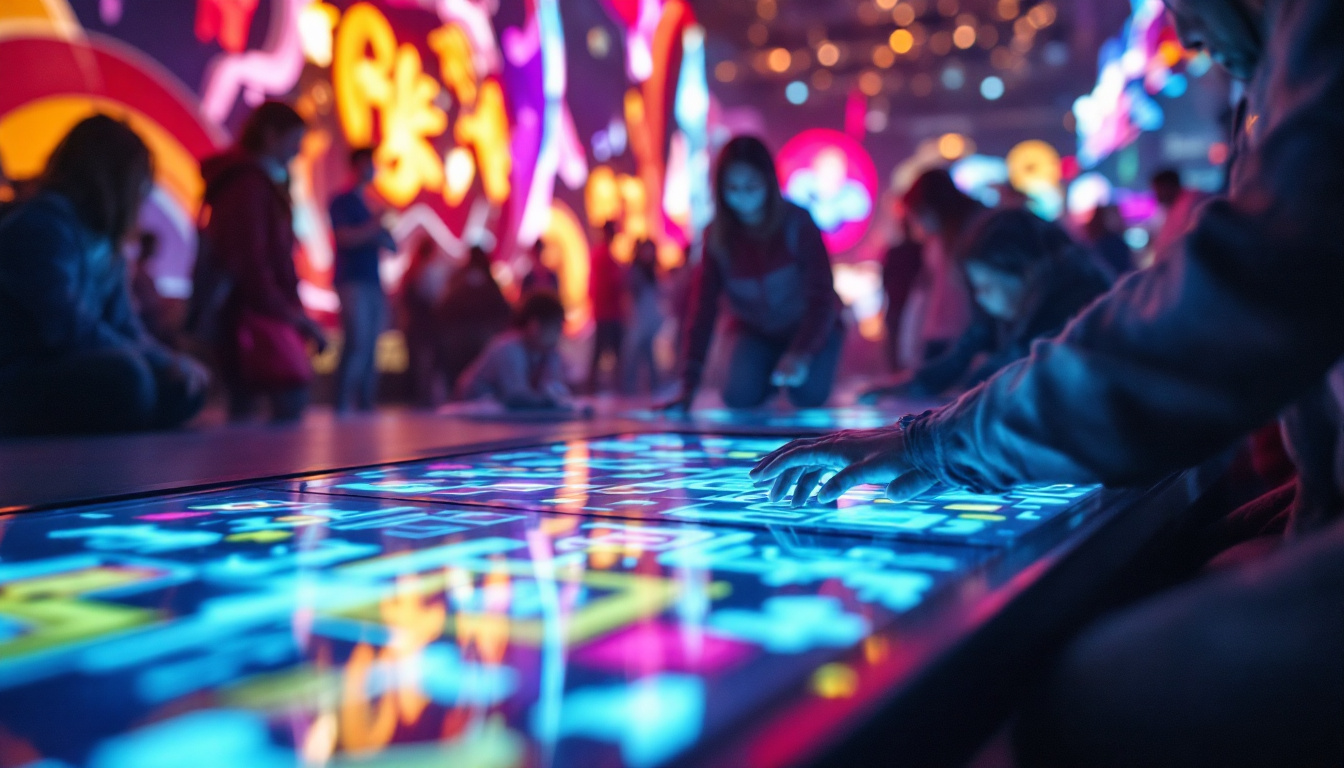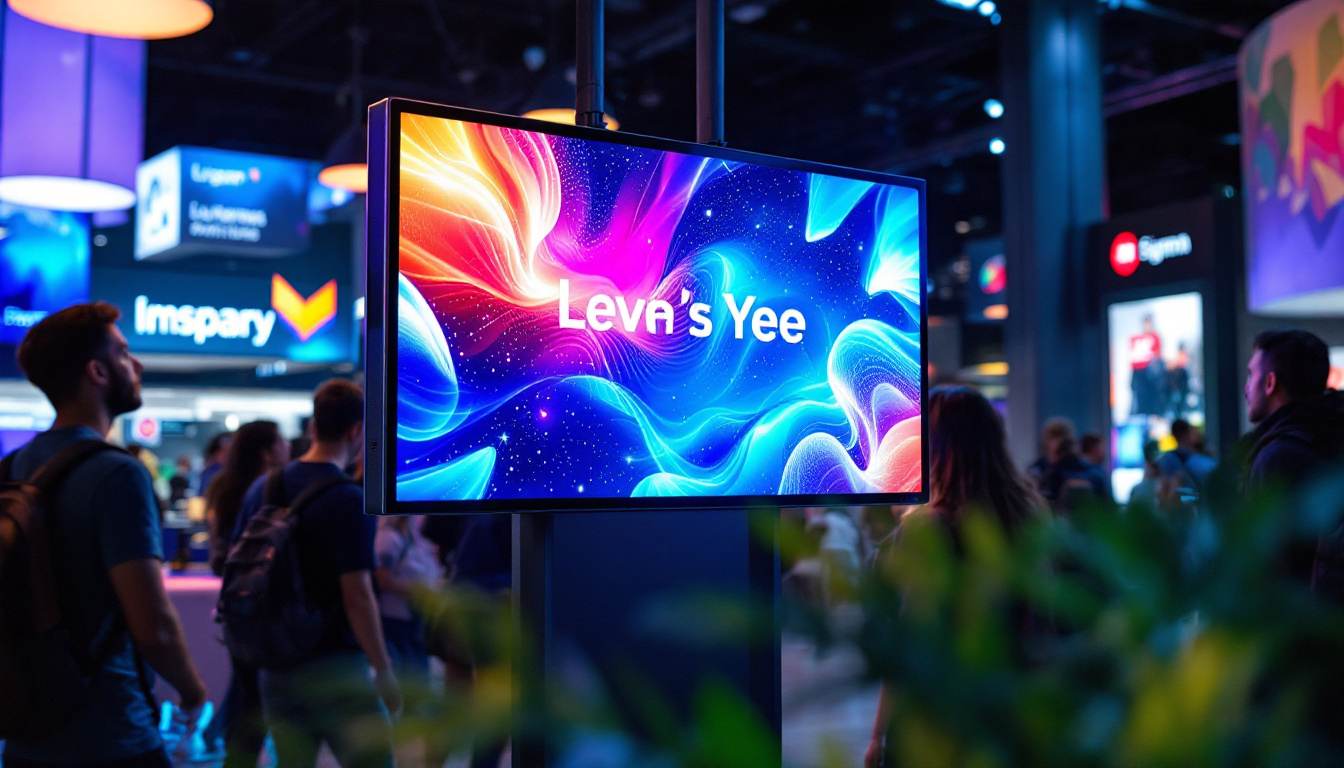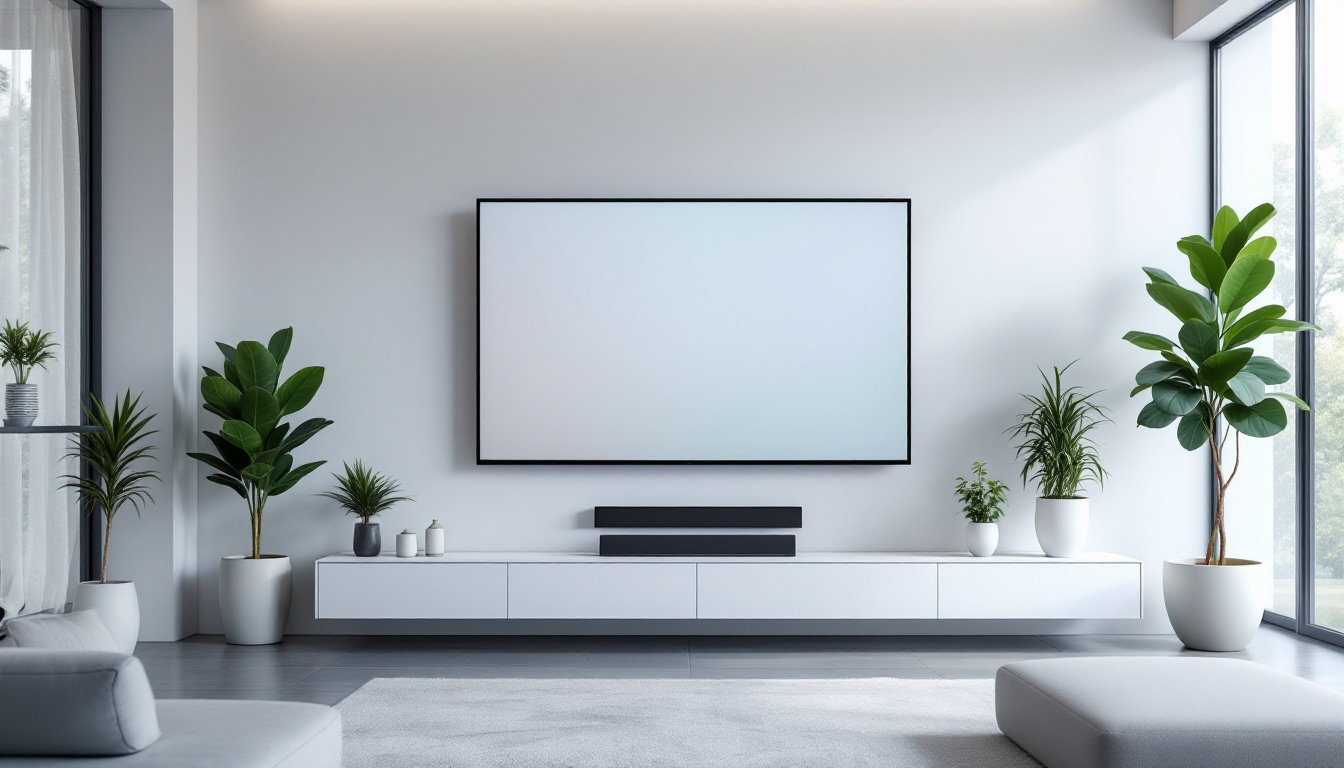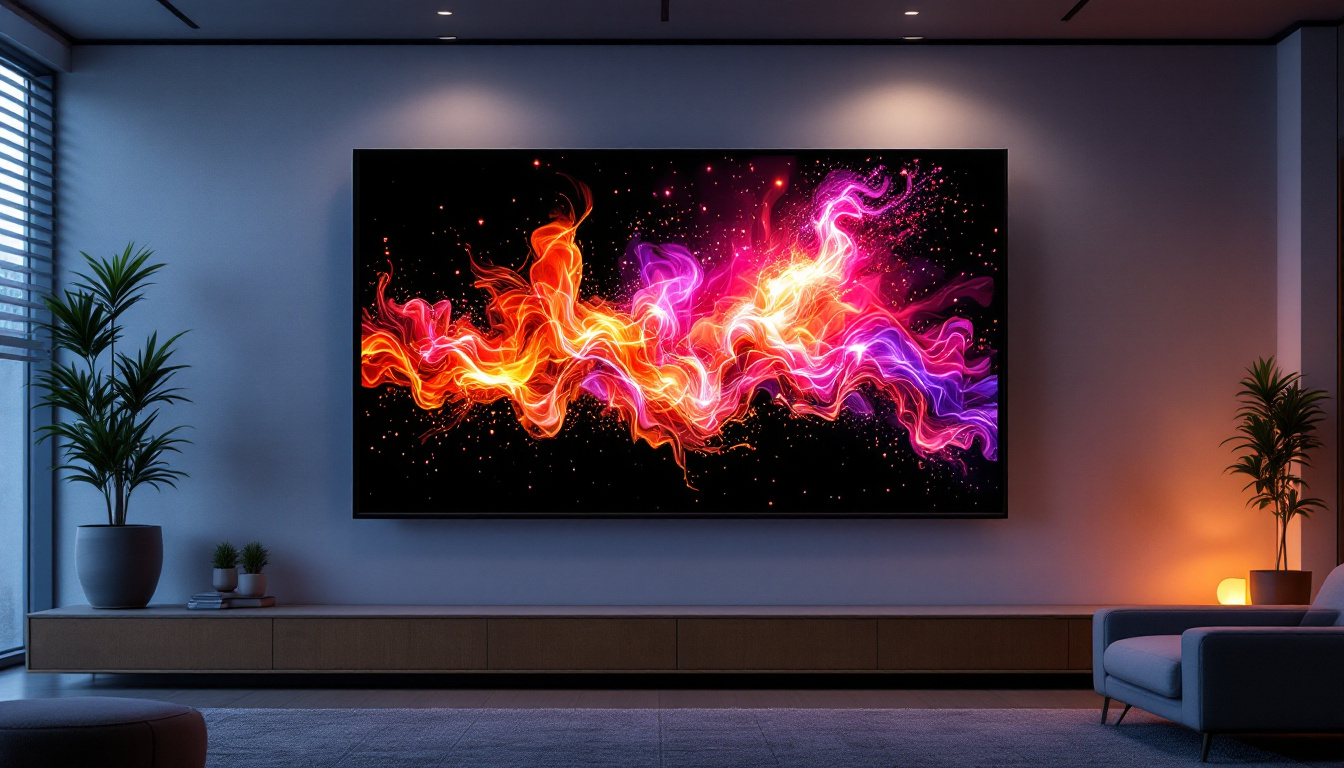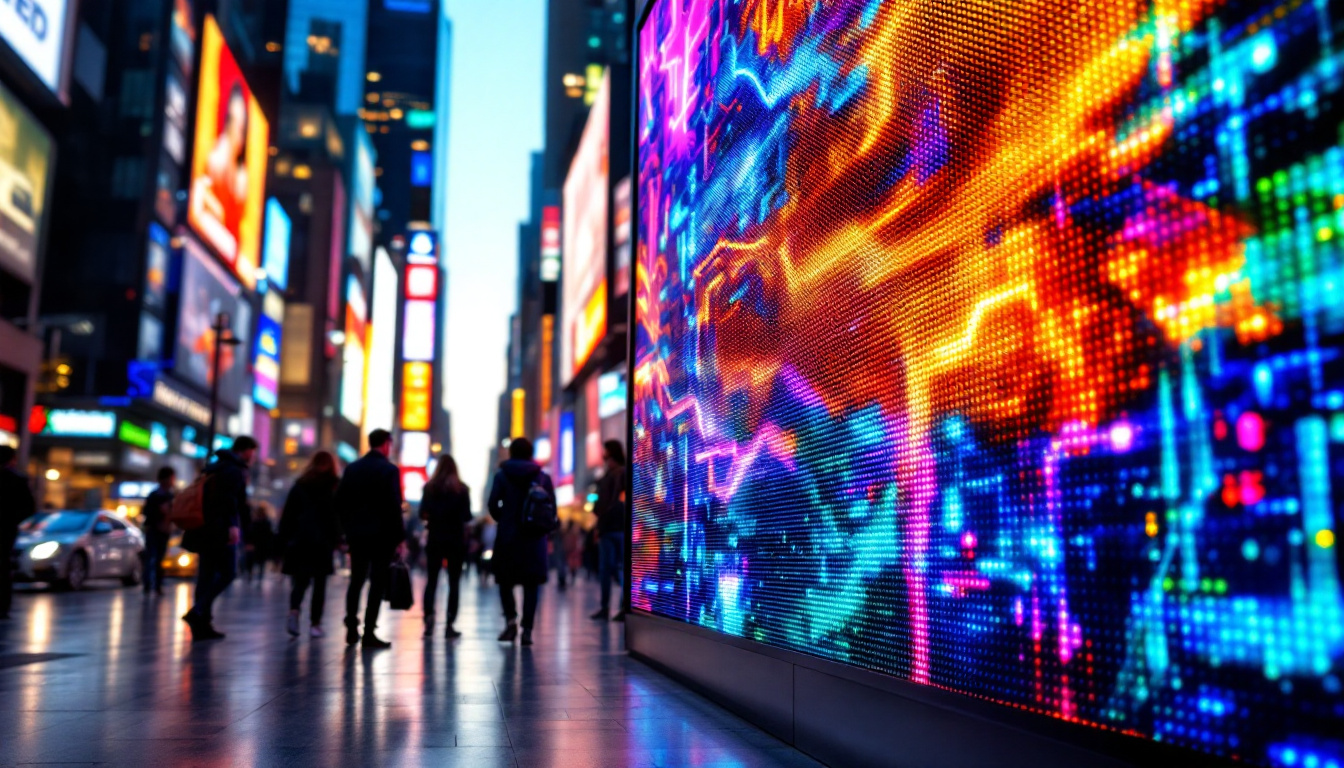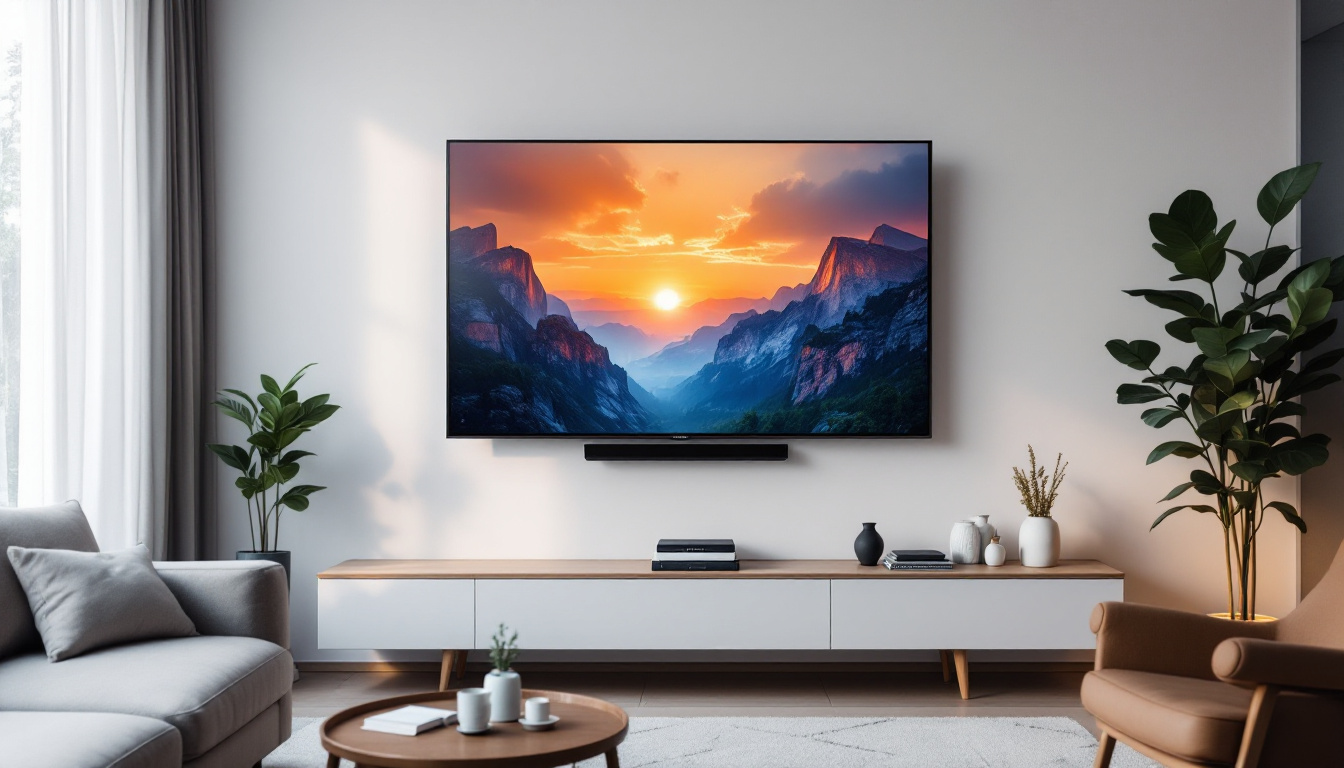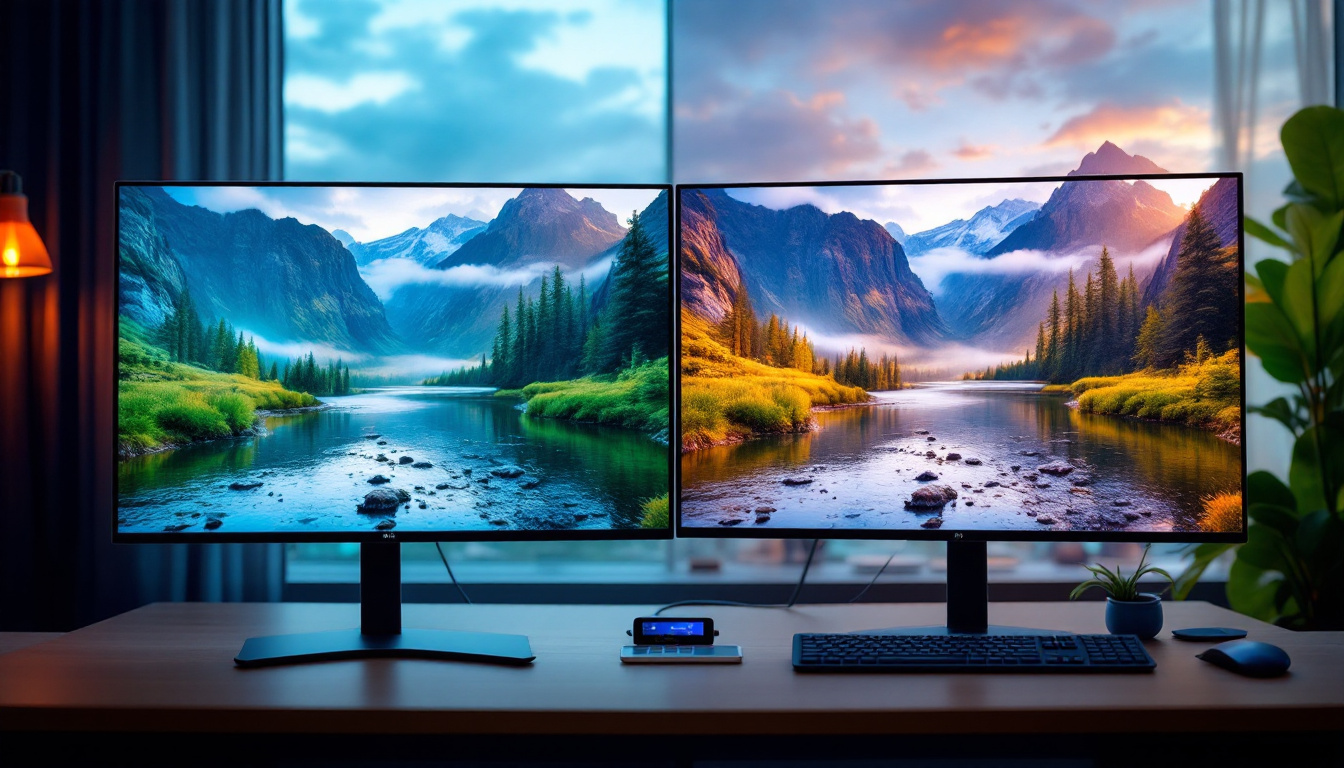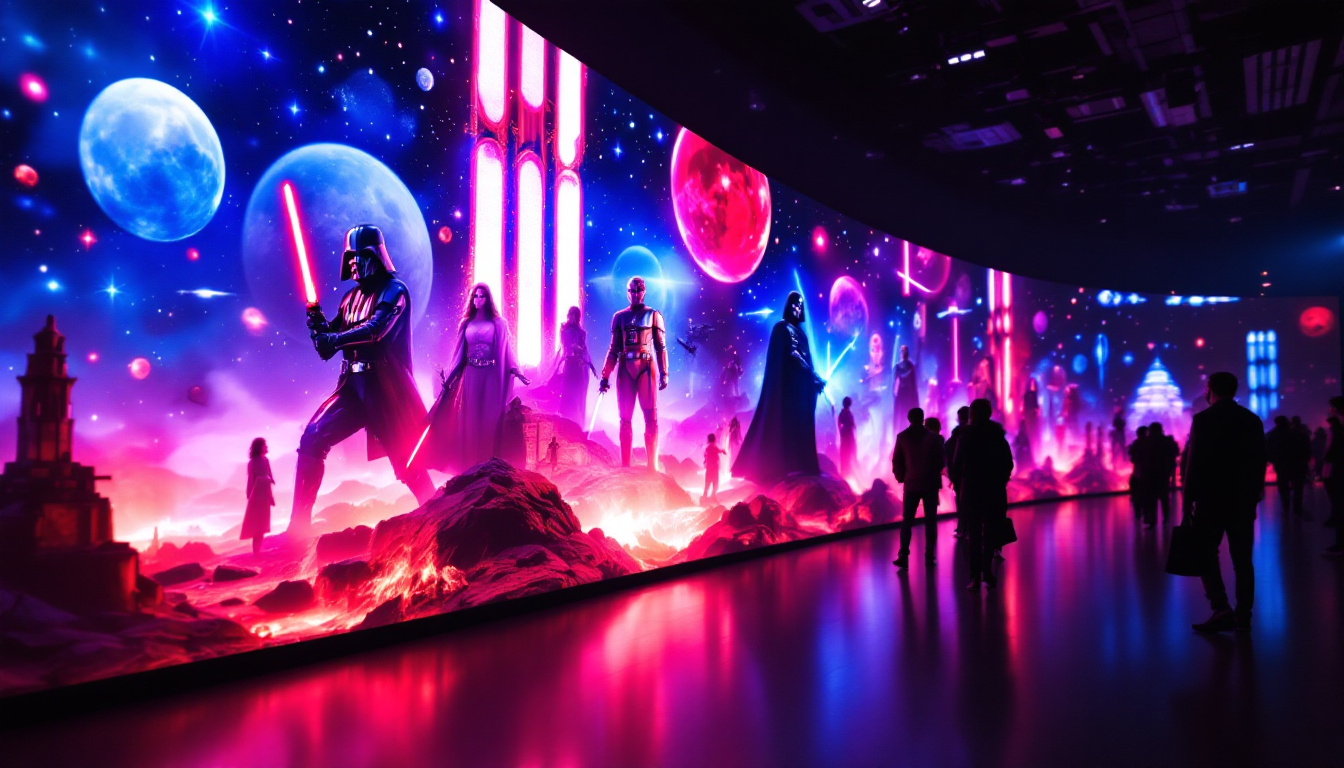In today’s digital age, large display cabinets equipped with LED technology have revolutionized the way information, advertisements, and visuals are presented in public and commercial spaces. From retail stores and museums to stadiums and transportation hubs, these dynamic displays captivate audiences with vibrant colors, sharp images, and versatile content capabilities. This article delves into the fundamentals of LED display cabinets, exploring their technology, benefits, applications, and considerations for selecting the right solution.
Understanding LED Display Cabinets
At its core, an LED display cabinet is a modular unit housing an array of light-emitting diodes (LEDs) arranged to form a screen capable of displaying text, images, and videos. These cabinets can be combined seamlessly to create large-scale displays of varying sizes and resolutions, making them ideal for both indoor and outdoor use.
The Technology Behind LED Displays
LEDs are semiconductor devices that emit light when an electric current passes through them. Unlike traditional display technologies such as LCD or plasma, LEDs produce their own light, which results in higher brightness and better contrast. The basic building blocks of an LED display cabinet are individual LED pixels, each consisting of red, green, and blue diodes. By adjusting the intensity of each diode, the display can render a full spectrum of colors.
Modern LED cabinets use surface-mounted device (SMD) technology, where LEDs are mounted directly onto the circuit board. This allows for higher pixel density and improved viewing angles. Advances in mini-LED and micro-LED technologies are pushing the boundaries further, enabling even finer resolution and more energy-efficient displays.
Modularity and Scalability
One of the key advantages of LED display cabinets is their modular design. Each cabinet is a self-contained unit that can be connected with others to form larger screens. This modularity offers flexibility in size and shape, allowing for customized installations tailored to the specific environment and purpose.
For example, a retail store might use a single cabinet to display promotional content, while a sports arena could assemble hundreds of cabinets to create a massive scoreboard or video wall. The ability to scale and configure these displays makes LED cabinets a versatile choice for many industries.
Advantages of Large LED Display Cabinets
Large LED display cabinets offer numerous benefits over traditional signage and other digital display technologies. Understanding these advantages helps businesses and organizations make informed decisions when investing in display solutions.
Brightness and Visibility
LED displays are renowned for their exceptional brightness, often exceeding 5,000 nits, which makes them easily visible even in direct sunlight. This high brightness level ensures that content remains clear and legible in various lighting conditions, a critical factor for outdoor applications such as billboards, transit stations, and stadiums.
Moreover, LED displays maintain consistent brightness across the entire screen, unlike LCDs that can suffer from uneven backlighting. This uniformity enhances the viewing experience and ensures messages are conveyed effectively.
Energy Efficiency and Longevity
Compared to other display technologies, LED cabinets consume less power while delivering superior brightness. This energy efficiency translates to lower operational costs, especially for large installations that operate for extended hours.
LEDs also have a long lifespan, typically ranging from 50,000 to 100,000 hours of use before brightness diminishes significantly. This durability reduces maintenance and replacement expenses, making LED display cabinets a cost-effective long-term investment.
Color Accuracy and Image Quality
LED technology provides vibrant colors and deep blacks thanks to its ability to control light emission at the pixel level. This capability results in high contrast ratios and sharp image quality, which are essential for attracting attention and conveying detailed visual information.
High refresh rates and fast response times further enhance the viewing experience, allowing smooth video playback without motion blur or flicker. These qualities are particularly important for dynamic content such as live broadcasts, animations, and interactive displays.
Durability and Weather Resistance
Large LED display cabinets designed for outdoor use are built to withstand harsh environmental conditions. They typically feature weatherproof enclosures with IP65 or higher ratings, protecting against dust, moisture, and temperature extremes.
This robustness ensures reliable performance in rain, wind, and intense sunlight, making LED cabinets suitable for a wide range of outdoor applications, from advertising billboards to public information displays.
Common Applications of Large LED Display Cabinets
The versatility of LED display cabinets has led to their adoption across diverse industries and settings. Their ability to deliver high-impact visuals makes them ideal for both commercial and informational purposes.
Retail and Advertising
In retail environments, LED display cabinets serve as eye-catching digital signage that promotes products, sales, and brand messages. Their bright, dynamic content helps stores stand out in competitive markets and engage customers effectively.
Outdoor advertising also benefits from large LED displays, which can be updated remotely to show timely promotions and campaigns. This flexibility reduces printing costs and allows for rapid content changes in response to market trends.
Sports and Entertainment Venues
Stadiums, arenas, and concert halls use massive LED video walls to enhance the spectator experience. These displays show live action, replays, scores, and advertisements, keeping audiences informed and entertained throughout events.
LED cabinets’ scalability allows venues to create immersive visual environments, from ribbon boards encircling seating areas to giant screens towering over fields or stages.
Transportation and Public Spaces
Airports, train stations, and bus terminals utilize LED display cabinets for real-time information such as arrivals, departures, and alerts. Their brightness and clarity ensure that travelers can easily read schedules and announcements, even in crowded or brightly lit areas.
Public spaces also employ LED displays for community messaging, emergency notifications, and wayfinding, contributing to safer and more efficient urban environments.
Museums and Exhibitions
Interactive exhibits and digital signage in museums benefit from the vivid imagery and flexibility of LED display cabinets. Curators can present multimedia content that educates and engages visitors, enhancing the overall experience.
LED displays can be customized to fit unique architectural spaces, allowing for creative installations that complement the exhibit themes.
Key Considerations When Choosing an LED Display Cabinet
Selecting the right LED display cabinet involves evaluating several critical factors to ensure the installation meets the intended purpose and performs optimally.
Pixel Pitch and Resolution
Pixel pitch refers to the distance between the centers of adjacent LED pixels, typically measured in millimeters. It directly affects the display’s resolution and viewing distance. Smaller pixel pitches yield higher resolution and sharper images but come at a higher cost.
For example, indoor displays often use pixel pitches between 1.2mm and 4mm to achieve close viewing distances, while outdoor displays may use pitches of 6mm to 20mm or more, as viewers are generally farther away.
Brightness and Contrast Requirements
Consider the ambient lighting conditions where the display will be installed. Outdoor displays require higher brightness levels to remain visible in sunlight, whereas indoor displays can operate at lower brightness to prevent glare and eye strain.
Additionally, contrast ratio influences image quality and readability. High contrast is especially important for displaying text and detailed graphics.
Cabinet Size and Weight
The physical dimensions and weight of each cabinet affect installation logistics and structural support requirements. Larger cabinets can reduce the number of seams and improve image uniformity but may be more challenging to handle.
Modular designs allow for easier transportation and assembly, but it is essential to ensure compatibility between cabinets to avoid display inconsistencies.
Environmental Protection and Durability
For outdoor installations, verify the cabinet’s IP rating and resistance to environmental factors such as rain, dust, and temperature fluctuations. Proper ventilation and cooling systems are also vital to prevent overheating and extend the display’s lifespan.
Control Systems and Content Management
Modern LED display cabinets come with sophisticated control systems that enable remote content updates, scheduling, and diagnostics. Choose a system that offers user-friendly software, compatibility with various media formats, and reliable connectivity options.
Effective content management ensures that the display remains relevant and engaging, maximizing its impact.
Future Trends in LED Display Cabinets
The LED display industry continues to evolve rapidly, driven by technological advancements and changing user demands. Several emerging trends are shaping the future of large LED display cabinets.
Micro-LED and Mini-LED Innovations
Micro-LED technology, featuring even smaller LEDs than traditional SMDs, promises unprecedented resolution, brightness, and energy efficiency. Although currently costly, micro-LED displays are expected to become more accessible, enabling ultra-high-definition large screens.
Mini-LED backlighting is also enhancing LCD displays, but true LED cabinets with micro-LED pixels will set new standards for image quality and durability.
Flexible and Transparent LED Displays
Flexible LED cabinets allow screens to curve or bend, opening creative possibilities for architectural integration and immersive environments. Transparent LED displays enable see-through effects, useful for retail windows and augmented reality applications.
These innovations expand the functional and aesthetic potential of LED display installations.
Artificial Intelligence and Interactivity
Integrating AI with LED display systems can enable personalized content delivery, facial recognition, and interactive experiences. For example, retail displays might adjust advertisements based on customer demographics or behavior detected by sensors.
Interactive LED walls can also respond to touch or gestures, enhancing engagement in public spaces and events.
Conclusion
Large display cabinets featuring LED technology have become indispensable tools for communication, advertising, and entertainment in modern society. Their superior brightness, energy efficiency, durability, and versatility make them suitable for a wide range of applications, from retail and sports venues to public transportation and exhibitions.
Understanding the technical aspects, benefits, and key considerations of LED display cabinets helps businesses and organizations select the best solutions to meet their needs. As LED technology continues to advance, future displays will offer even greater image quality, flexibility, and interactivity, further transforming how visual content is delivered and experienced.
Discover LumenMatrix’s Innovative LED Display Solutions
Ready to elevate your space with the latest in LED display technology? Look no further than LumenMatrix, where innovation meets visual excellence. Our comprehensive range of products, including Indoor and Outdoor LED Wall Displays, Vehicle LED Displays, LED Poster Displays, LED Sports Displays, Floor LED Displays, Custom LED Displays, All-in-One LED Displays, and LED Transparent Displays, are designed to transform your visual communication and captivate your audience. Embrace the future of digital signage with LumenMatrix and create unforgettable visual experiences. Check out LumenMatrix LED Display Solutions today and see the difference for yourself.

